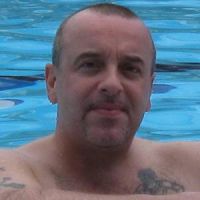Timeless Healing Techniques - 7 Steps to Wellness & Transformation
Perhaps, like me, you think that the journey of medicine is a fascinating tapestry woven through the ages, reflecting humanity's quest to understand and combat illness. I have a passion for exploring the depths of history, unearthing the timeless wisdom of ancient healing practices. From the eclectic and often bizarre rituals of ancient healers to the foundational principles that underpin modern healthcare, the evolution of medical practice reveals a rich narrative of discovery and ingenuity. The concept of an integrated approach to healing is far from novel; rather, it has woven its way through the fabric of human history, manifesting in various forms since ancient times.
Traditional or allopathic medicine, which has dominated the healthcare landscape for a mere century, has long been overshadowed by a prevailing focus on external solutions for the past five centuries. In truth, what we now consider alternative or complementary medicine is the authentic traditional practice, a wisdom rooted in over 2,500 years of experience! It is a curious irony that genuine traditional medicine has been relegated to the label of "alternative," a term suggested by the new regime of so-called traditional practices that have co-opted the name for their own advantage. This misappropriation has gone largely unchallenged, leaving the venerable traditions of holistic healing to quietly assert their validity.
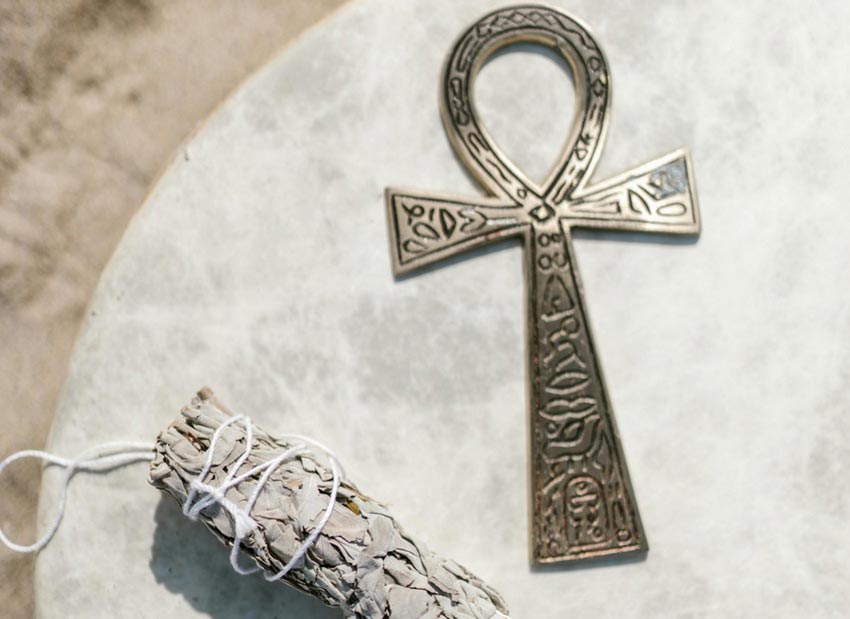
Healing in Ancient Greece
To grasp the full evolution of healing practices, allow me taking you on a journey back through time, tracing the origins of healing in Ancient Greece, a turning point that set the foundations for medical wisdom we still seek today. In the vibrant tapestry of Classical Greece, between 450 BC and 380 AD, traditional medicine flourished as a cohesive system, harmoniously intertwining the realms of body and spirit. This era witnessed a profound understanding of healing, where practitioners recognised the intricate balance between the inner self and the external world. Scattered like sacred beacons across southern Europe, approximately 400 temples dedicated to Asclepius—the revered ancient Greek god of healing—served as sanctuaries for the ailing. Those in search of relief from their ailments embarked on journeys from bustling towns and cities to these tranquil havens, seeking solace and restoration within the hallowed grounds of these healing temples. It was here, amid the echoes of devotion and faith, that the art of healing reached its zenith, blending ancient wisdom with divine reverence.
The first consequence of this arrangement was a profound call to action. Those seeking healing could no longer remain passive; they had to embrace their journey with intention and purpose. This meant more than merely relocating their bodies. It demanded a radical shift in mindset and psychology. It required effort, discipline, and, yes, a willingness to endure some hardship along the way. Modern research echoes the wisdom of the ancients, revealing that the further one ventures to seek help, the more favourable one's prospects, especially in the context of cancer treatment. This begs the question: what knowledge did the ancient Greeks possess about the healing journey? They understood that a pilgrimage of distance could catalyse profound transformation, urging patients to venture far beyond their comfort zones in pursuit of wellness.
In today’s world, the journey may not always be physical; often, it is a psychological odyssey. Individuals must navigate from one state of being to another, embarking on an inner expedition that challenges their very essence. The desire to heal must ignite a fierce yearning within—a longing to realise their fullest potential as conscious, embodied beings. This inner drive propels them to confront ingrained beliefs about themselves, to dive deep into both conscious and unconscious realms, and to embody the archetype of the seeker, yearning for restoration. In my experience, this represents the heart of true healing and transformation. Without a fundamental shift in consciousness, the integration of a person’s life remains elusive. It’s through this metamorphosis, a fierce confrontation with the self, that real healing unfolds. The journey is not merely about physical displacement; it’s about transcending boundaries within, unlocking the door to a new, vibrant existence.
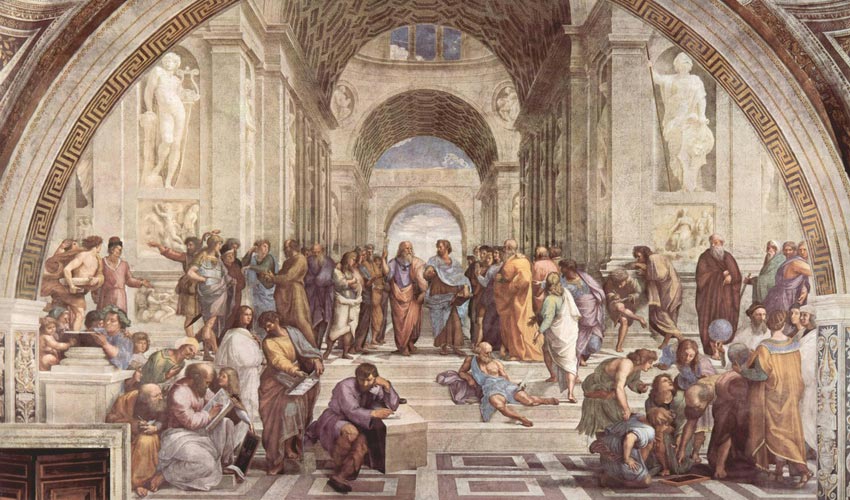
The first crucial implication of this arrangement was clear: action was mandatory. They had to engage actively in their own healing journey, taking deliberate steps to relocate, not just physically, but psychologically. This intentionality required more than mere movement; it necessitated a shift in mindset and attitude. It demanded effort and discipline, and, inevitably, it came with its share of hardships. Modern research reinforces an age-old truth: the distance one is willing to travel in pursuit of help often correlates with a better prognosis, especially in cases of serious illness like cancer. There was deep logic and profound wisdom in the practices of the ancient Greeks, who understood that healing often required a physical journey to sacred sites far from home.
Today, while the physical journey may be replaced by an internal voyage, the essence remains the same. The path to healing is often an inward exploration, where we must traverse from an initial mindset to a profoundly transformed psychological state. An indomitable urge must rise from within the seeker, an insatiable drive to live life to its fullest potential as a fully conscious and embodied human being. This quest for healing encourages people to confront and challenge their deepest beliefs about themselves. It invites them to explore both conscious and unconscious realms, shedding light on hidden fears and desires. To truly embrace the path of the seeker is to embody the archetype of transformation, ready to engage with the rigorous process of healing.
I believe that this is the heart of a transformative journey. Without a fundamental shift in consciousness, the true integration and healing of a person’s life remains elusive. It is this profound change that lays the groundwork for authentic healing, enabling people to reclaim their wholeness and step into their most vibrant selves.
Temple of Asclepius
When people sought healing within the sacred halls of the temples of Asclepius, their journey began in the outer sanctum, a place dedicated to addressing the needs of the body. Here, they engaged in fasting, immersed themselves in the principles of nutrition, underwent detoxification rituals, and indulged in soothing massages enhanced by fragrant anointed oils. Many modern health specialists often encounter a similar expectation: clients anticipate that their healing journey will commence at this physical level. They yearn for assurances that tangible remedies exist for their specific ailments. Yet, all too often, they find themselves cocooned in a comforting illusion cultivated by the tenets of mechanistic medicine, the belief that each symptom must surely have a solely physical origin, warranting only a physical response.
This mindset, I believe, reflects a fundamental aspect of human nature and captures our current collective understanding of disease and wellness. While this physical approach to healing is valid, it remains, in many ways, limited. It serves as the foundation for the initial phase of our Seven Stages model of healing. Yet, the deeper connections between mind, body, and spirit—those that unfold in the later stages of our model—have yet to fully earn their place in the mainstream medicine narrative. The research supporting these integrative links exists but struggles for acceptance among many practitioners. It may take decades before the evidence reaches a level of reproducibility that compels sceptics to reconsider the breadth of healing possibilities. Until then, we continue to navigate the intricate dance of healing, inviting individuals to explore beyond the immediate confines of their physical symptoms.
Step inside the ancient temple of Asclepius, where the air hums with the echoes of sacred rituals and ancient wisdom. After completing their outer healing rites, Greek patients would find themselves drawn into the temple's inner sanctum, a hallowed space where the priests, guardians of the divine, presided over the mysteries of the human spirit. At the heart of this sanctuary stood majestic stone pillars, intricately carved with the image of twin serpents coiling gracefully around their surfaces. In Greek mythology, these serpents embody the essence of healing. They are symbols of the delicate interplay between the conscious and the unconscious, the visible and the hidden. Their presence served as a powerful reminder that true health transcends mere physicality; it is deep-rooted in the harmony of mind and body.
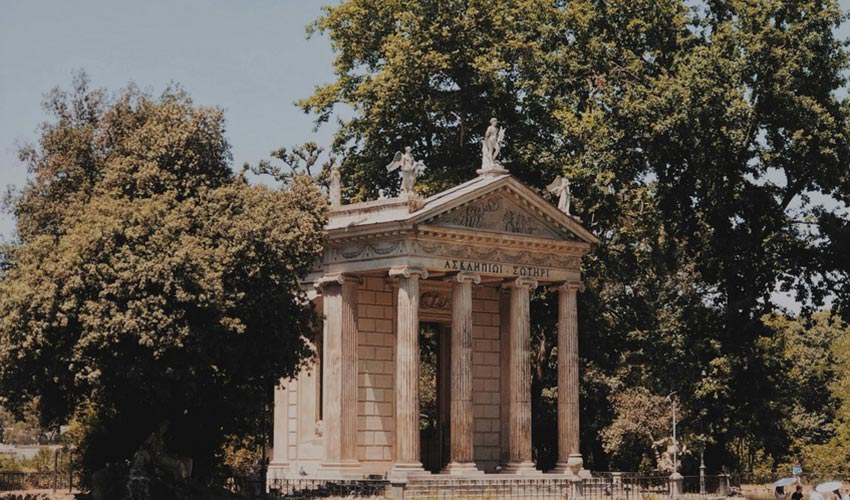
Before seeking divine intervention, patients were called to take a solemn oath, pledging their fidelity to Apollo and Asclepius, the gods who personified the healing arts. They were also invited to present an offering of honey cake, an act rich with meaning. This offering signified a crucial truth: to invite healing and renewal, one must first release what no longer serves them in their lives. Elliot Dacher eloquently captures this sacred ritual, describing it as “an outward projection of the healer within,” a profound acknowledgment and symbolic surrender to the deeper healing forces lying dormant within our minds and spirits, forces that remain elusive until we dare to explore their depths. In the temple of Asclepius, amid the intertwining serpents and sacred rites, patients found not only solace but a pathway to profound transformation.
As patients stepped into the serene embrace of the inner temple, it was understood they would embark on a transformative journey that could last days, or even weeks. Here, the sanctity of patience was revered; they were gently urged to remain until a significant sign appeared, often manifesting as a profound dream, heralding the onset or fruition of their healing process. Each patient was invited to tap into their own reservoir of inner wisdom, for it is through this inner healer that true transformation occurs. They learned to transcend the limitations of the five senses, opening themselves to the rich tapestry of symbols and messages woven by the unconscious mind.
Once these dreams emerged, the temple priests would delve deeply into their meanings, offering interpretations that became the compass for each patient’s unique healing journey. In embracing this sacred path, they proclaimed that they were not in search of a fleeting remedy or superficial cure; rather, they were ready to face a deeper truth and the profound, healing forces that dwelled within. Here, in this sacred space, they began to cultivate a true understanding of healing, one that transcended the physical and ventured into the spiritual depths of their being.
The Twin Snakes
The twin snakes entwined around the Caduceus have transcended the pages of ancient lore to become a powerful symbol of healing in modern medicine. For millennia, this emblem has embodied a legacy of authority rooted in myth, a reminder of the timeless forces that shape our daily existence, forces often overlooked. What does this emblem truly represent? At its core lies the staff of Hermes, the Greek incarnation of the Egyptian deity Thoth. With the body of a man and the head of an ibis, Thoth was revered as the progenitor of arts and sciences, master of music, astronomy, eloquence, and the written word. His staff symbolises divine power, a conduit between the celestial and mortal realms. According to Greek legend, Hermes once stumbled upon two snakes locked in a ferocious battle. To bring harmony to the chaos, he thrust his staff between them. In that moment, the snakes coiled around the staff, eternally engaged in their rivalry yet bound by the reconciling force of Hermes. Today, the Caduceus stands as a testament to this ancient wisdom, embodying the delicate balance in the medical field. It signifies the coexistence of opposing forces, healing and illness, life and death - reminding us that true mastery lies not in the domination of one person over the other, but in the art of coexistence.
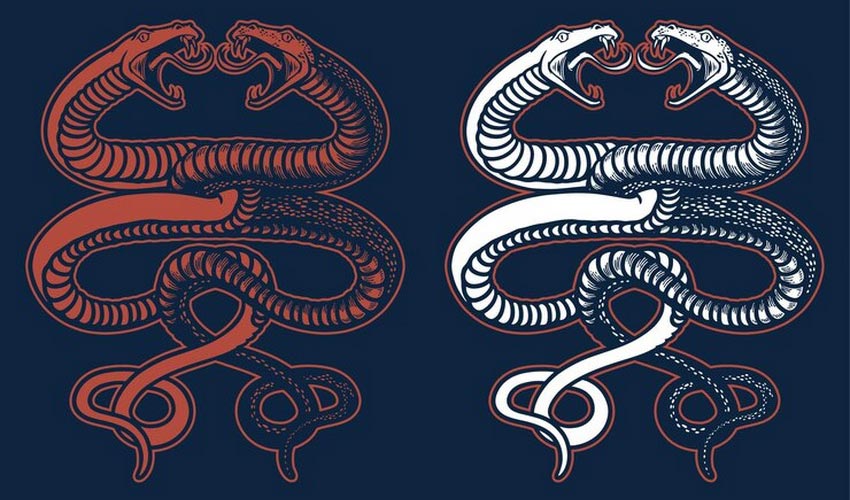
Wisdom & Knowledge
To truly embrace the transformative journey of healing, both healthcare providers and patients must tap into multiple sources of wisdom. This dual engagement is vital for unlocking the full potential of healing. Patients have the responsibility to gather knowledge from a diverse array of sources, empowering themselves with external insights. Yet it's crucial to understand that not all healing hinges on external solutions or remedies; a profound inner journey is equally essential. Alastair Cunningham (2005) illuminates this intricate landscape by categorizing the paths to healing into two primary domains:
Spontaneous Healing is the remarkable capability of the body to mend itself, acting without deliberate intervention from its owner or external parties. This natural process is at work constantly, from the healing of wounds and the immune system's response to invaders, to the gradual alleviation of anxiety and depression over time. On the other hand, assisted healing involves conscious actions taken by the individual or others to foster recovery. Cunningham further delineates assisted healing into two distinct forms.
Externally Assisted Healing refers to interventions applied from outside, whether through self-administered measures or assistance from others. This can span from traditional practices in the healing temples of yore to contemporary methods such as medication, surgical procedures, or healthy lifestyle choices like exercise and nutrition.
Conversely, Internally Assisted Healing arises from profound changes initiated within. It involves altering the patient’s thoughts and emotional responses in an effort to positively influence both mental and physical health. This pathway, commonly known as mind-body or self-healing, requires deep introspection and a fundamental shift in the patient’s beliefs, values, and preconceptions.
Beyond these two approaches lies a transcendent dimension of healing. Deepak Chopra, during his enlightening address at the Institute for Noetic Studies (IONS) conference in Washington, 2005, articulated a profound insight into human perception, stating that there are three essential ways to perceive reality:
- Through the Eyes of the Flesh: To truly grasp the wonders of the world around us, we must engage our sensory perception. Science employs cutting-edge technology, aptly dubbed the “prostheses of our senses,” to unveil the secrets of the physical realm. For instance, when we seek to uncover the presence of craters on the moon, we rely on these advanced "eyes of the flesh" to gather vital data. In the realm of mechanistic, externally-assisted healing, our understanding hinges profoundly on this level of knowledge, underscoring our deep dependence on the tools that extend our natural abilities.
- Through the Eyes of the Mind: Information flows to us through our senses, each piece a thread woven into the intricate tapestry of our personal experiences. We interpret this influx against the rich backdrop of our own knowledge, ideas, thoughts, perceptions, values, and beliefs. Yet, it is our internal dialogue, that complex mental construct, which often demands a rewrite to accommodate fresh insights allowing the new to replace the old. This transformation unfolds not in the tangible world around us, but within the vast landscape of our minds.
- Through the Eyes of the Soul - Chopra quotes William Blake:
We are led to Believe a Lie
When we see not Thro’ the Eye
Which was Born in a Night to perish in a Night
When the Soul Slept in Beams of Light
(Blake explains that true reality exists beyond the illusions presented by our senses.)
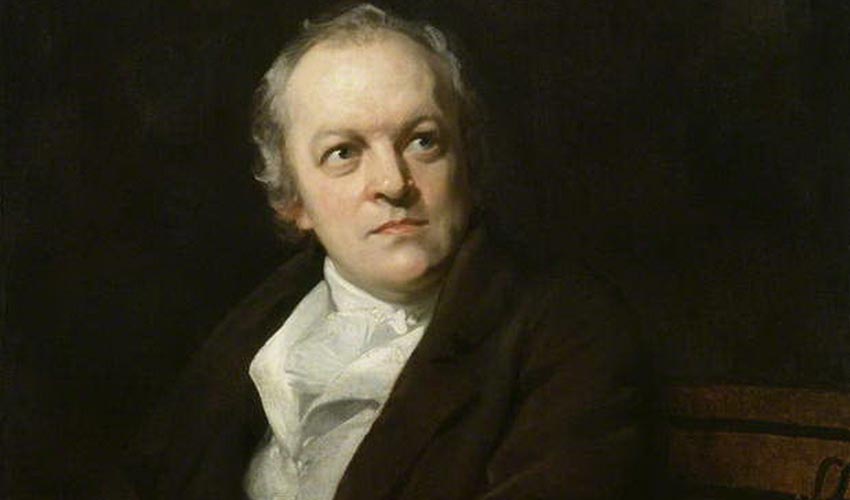
To truly uncover the profound depths of our being - the timeless, eternal essence that transcends the physical and the mental - we must look beyond the superficial gaze of our flesh and the confines of our intellect. Our journey leads us into the rich inner landscape, a realm of transcendent consciousness that exists far outside the bounds of daily waking reality. This sacred terrain defies the limitations of both mind and body. Such awareness has been held in high esteem as a vital aspect of any healing journey. When we begin to perceive reality through the "eyes of the soul," our sense of self evolves. We no longer find ourselves tethered solely to the fluctuations of physical and psychological existence. Instead, we awaken to a new vision, a witnessing self, where the worries of the body and the turmoil of the mind dissolve into the background. What remains is a profound sense of presence, an awareness of a timeless, eternal Self.
In this elevated state, all fears related to our physical reality, be it health or illness, vanishes as we embrace the expansive truth that we are so much more than our physical forms. We "wake up" to the extraordinary essence of our true nature, soaring beyond the mundane concerns of daily life. We become, in a way, “eternally healthy,” liberated from the fears and constraints of a finite physical existence. In this awakening, we discover a deep, unshakeable silence within, a knowing that resonates with the very core of our soul. It’s as if we’ve finally acknowledged our existence and its significance, leaving us in awe of our own being.
Yoga
In the East, a rich tapestry of healing traditions beckons those seeking deeper understanding and transformation. Here, the essence of yoga unfolds in various forms, each offering a unique pathway to inner illumination. Bhakti Yoga invites practitioners into the realm of love and devotion, nurturing the heart’s connection to the divine. Jnana Yoga challenges the mind with intellectual rigor and discipline, guiding seekers through the labyrinth of knowledge towards enlightenment. Hatha Yoga empowers the body, cultivating mastery over a person’s physical form and senses, while karma yoga emphasizes the beauty of selfless service, illuminating the profound joy found in giving. Through steadfast commitment to these spiritual disciplines, an individual is granted the extraordinary opportunity to transcend the limitations of mere sensory experience and mental constraints. This journey leads to a higher state of consciousness, as glimpsed in the transformative insights It is a third way of perceiving reality that transcends the ordinary. In contrast, the West has often wandered without the same depth of exposure to these well-defined paths, missing out on the profound wisdom they offer. Yet, the call to explore these ancient traditions resonates ever stronger, inviting all to discover the transformative power of yoga’s diverse teachings.
The awakening to transcendent consciousness is a momentous milestone in humanity's evolution, largely inspired by the extraordinary insights of sages like Buddha, Lao Tzu, Confucius, Socrates, and the wise thinkers of the Upanishads. Before their profound influence graced our world, human existence was tethered to a narrow expanse of everyday reality, dictated primarily by sensory perception and mental processes. Life revolved around the relentless pursuit of pleasure and the instinctive avoidance of pain, governed chiefly by the autonomic nervous system's primal mechanisms of reward-seeking and the fight-or-flight impulse. Survival hinged on these elemental drives, seeking nourishment, ensuring the continuation of our species, and evading threats.
However, the teachings of these enlightened sages shattered these limiting paradigms, inviting humanity to transcend the mundane and glimpse a higher reality. It was a call to explore not just the world as perceived through the five senses, but to access a profound dimension of existence, a state of pure awareness richly articulated in ancient metaphysical texts. This transformative journey demands courageous introspection, a profound inquiry into the very essence of our being. It is an inner odyssey that promises not just a shift in perception but a revolutionary expansion of consciousness itself.
Human beings have the extraordinary capacity to rise above the mundane and, for the first time, experience reality beyond the limitations of the five senses. This is not merely the physical world we perceive but a transcendent realm. It is a state of pure awareness eloquently articulated in metaphysical writings. To embark on this journey is to engage in a profound inner exploration, delving into the very essence of one's reality. While modern allopathic medicine has achieved remarkable breakthroughs, carving its path along the Caduceus’ Knowledge, it has often overlooked the crucial element of Wisdom. This oversight neglects the vital quest for inner awareness, the exploration of our unique consciousness. It is in this nuanced landscape that true healing awaits, healing that transcends the mere treatment of symptoms and diseases, beckoning us toward an understanding of our wholeness. This journey invites us to seek not just physical restoration, but a deeper restoration of the self, bridging the gap between the body, mind, and spirit.

Back to the Temple of Asclepius
Let us once again journey to the hallowed temple of Asclepius, a place where healing transcended the physical. Inside those sacred walls, patients experienced profound inner transformations, guided by the insightful interpretations of priests. Once their spiritual awakenings were embraced, they were led outside to vast amphitheatres, where the great tales of Greek drama came to life such as the Oedipal Trilogy, the tragic arcs of the Orestia, the epic voyages of Odysseus, and the stirring works of Sophocles, Aeschylus, and Euripides.
Among these stages, the great theatre of Epidaurus stood as a testament to artistry, famed for its unparalleled acoustics, still echoing with the voices of the past. The intention behind immersing patients in these dramatic masterpieces was profound: to reveal that what they perceived as their own personal tribulations were not theirs alone. Beneath the weight of individual struggles (Be it love, hate, life, or death) lay the timeless narratives of humanity, retold through the ages. These performances served as reflections, inviting individuals to see their life stories mirrored in the archetypal themes of lust and betrayal, vengeance and redemption. Each production provided a framework for deep introspection, offering wisdom that could guide patients through their own turbulent emotions.
In these moments of reflection, patients could grasp the connections between their lives and the mythic tales unfolding before them. Many of us can relate all too well to life's traumas - heart-breaking betrayals, devastating losses, and the scars of experience. Acknowledging that we are all players in this grand narrative may grant us a lightness of being, encouraging us to take life a little less seriously. In a world where the greatest peril lies in the tendency to overinflate our own importance, we are reminded that we are, indeed, mythical beings navigating through mythical lives.
As we traverse our own heroic journeys, we often spend the first chapters of our lives constructing fortresses for our emerging egos, only to realise, as time unfolds, that external achievements rarely quell the deeper yearnings of our souls. It is in awakening to this profound realisation that we begin to shift focus from what is dictated by society to what resonates within. No longer do we chase after the validations of parents or peers; instead, we seek the truths buried deep within our psyche, engaging with the inner monologue that shapes our existence. Many may have wrestled with the arduous transitions of life, feeling isolated in our struggles. Yet throughout the annals of history, similar stories have unravelled in both sacred texts and mythological epics. As we take our seats in the amphitheatre of life, we come to understand that we are not alone; we are partaking in the enduring human plight, reliving timeless narratives etched in the fabric of culture. With this evolution of perspective, we can release the anxiety that compels us to believe that we are 'missing the mark' in this journey.
Within the Asclepian temples, amidst sculpted forms crafted by the likes of Phidias and Praxiteles, scholars engaged in vibrant philosophical debates, nurturing minds through reflective explorations of existence. Beauty, truth, and virtue emerged as cornerstones of a well-lived life, elements woven into the fabric of profound wellness. The Greek healing traditions underscored the intricate tapestry of inner and outer experiences, advocating the necessity of both tangible remedies and inner healing. Each external movement, be it a physical remedy, was paralleled by an internal shift, creating a holistic environment for healing that intertwined body, mind, and spirit. The Asclepian temples stood as pioneering examples of integrative medicine, emphasising the critical balance of both dimensions in pursuing wellness. This interplay between external and internal healing, between the empirical and the mystical, has echoed through history, from ancient Greece to the Renaissance, moments when these dual pathways found harmony. These crossover periods flourish with a synthesis of the arts, science, and healing, a vibrant tapestry enlivened by the coexistence of contrasting perspectives.
Today, as we navigate yet another pivotal crossover in our history, we witness a resurgence of interest in holistic healing practices. We have made remarkable advancements in technology and outer healing but must not overlook the profound importance of nurturing our inner lives. The universe's insistence on balance compels us to integrate both aspects of our existence, revealing the dance of yin and yang in our everyday experiences. In this era of integration, we have unprecedented opportunities to glean wisdom from this extraordinary synthesis, reimagining our journeys with newfound awareness and purpose.
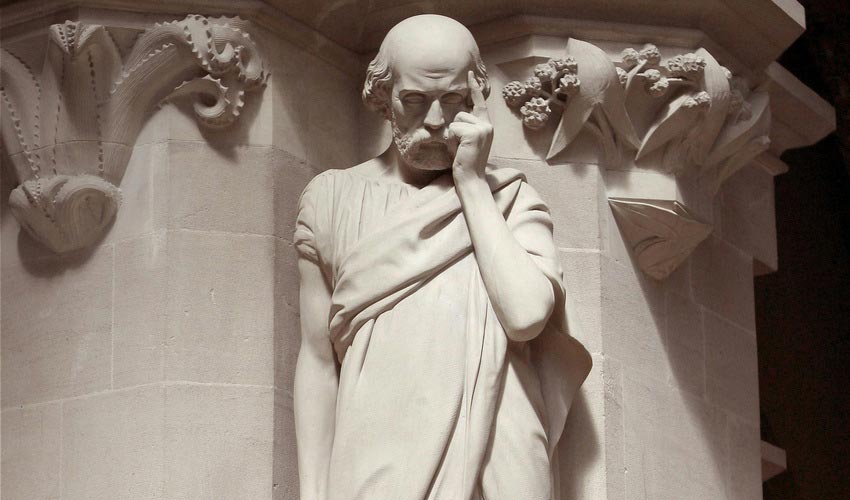
Hippocrates
In the ancient landscape of healing, the Cnidian School of thought regarded the human body as a complex machine, a brilliantly crafted entity that required repair when it faltered. Yet, a revolutionary voice emerged in this era: Hippocrates (460–370 BC). Unlike his contemporaries, Hippocrates ventured beyond the mere mechanics of the body. He embraced the individual as a harmonious whole, delving into the myriad factors that could lead to illness, with a particular focus on the inner attitudes of patients. To him, symptoms weren’t mere indicators of dysfunction; they were the body's innate signals, striving to restore balance. His approach involved natural remedies that would provoke symptoms, thereby catalysing the body's own healing processes. Further enriching his insights, Hippocrates recognised the profound power of dreams, believing they offered invaluable diagnostic and therapeutic revelations. He proposed that while our senses are active during the day, it is in the realm of sleep that the soul thrives, crafting impressions rather than merely receiving them. This notion underscored an early understanding of the delicate dance between the mechanistic and holistic traditions where the outer body and inner psyche coalesce.
Galen
Fast forward a few centuries to the time of Galen (ca. 130–200 CE), an eminent Roman healer whose perspectives marked a significant shift. Galen viewed the body primarily as a collection of parts, each needing dissection to understand and heal. Unlike Hippocrates, who perceived symptoms as the body’s way of initiating healing, Galen pioneered the idea that symptoms were the central problem demanding targeted treatment. This pivotal distinction paved the way for a more mechanistic view of medicine, distancing itself from the holistic insight that defined Hippocratic thought. Nevertheless, Galen’s recognition of dreams remained admirable. He even employed them to guide surgical interventions. Yet, from a modern vantage point, Galen’s approach epitomises a critical departure from a holistic paradigm, leaning instead towards a fragmented, scientifically oriented understanding of health and healing.
Christian Healing
After the era of Galen, the prevailing winds of medical thought shifted back toward a more vitalistic perspective, ushering in the emergence of Christian healing traditions. In this transformative period, the notion of remedies as we know them faded into the background; what took centre stage were the profound power of faith and the unmistakable presence of the Christ-like healer himself. Here, the focus shifted from physical interventions to the divine intervention of God or Christ, fuelled by belief and the fervour of the faithful seeking healing. Though remnants of physical medicine lingered, they were overshadowed by a growing conviction that illness was retribution from God for people’s sins or deviations from divine law. Thus, any attempt to cure ailments with mere physical remedies was seen not only as misguided but as a direct challenge to God’s will. Many believed illnesses stemmed from demonic possession, witchcraft, or the sinister spells of mischievous spirits. In such cases, the pathway to healing lay solely in prayer, penitence, or seeking the intercession of a saint.
Take, for example, St. Anthony, whose name was invoked in cases of ergotism, which is a horrifying affliction caused by a rye fungus, inducing agonising intestinal burns that drove sufferers to convulsions, interpreted by onlookers as demonic possession. Or consider the plight of those afflicted with rheumatic fever, whose erratic movements - a condition known as chorea - sent believers to plead with St. Vitus for deliverance. Comparing the ancient Greek approaches to epilepsy with the medieval superstition of later centuries starkly highlights this regression. It underscores how medicine, once a beacon of enlightenment, had devolved into the shadows of ignorance and fear, losing sight of the comprehensive approaches that had once enlightened the healing arts.
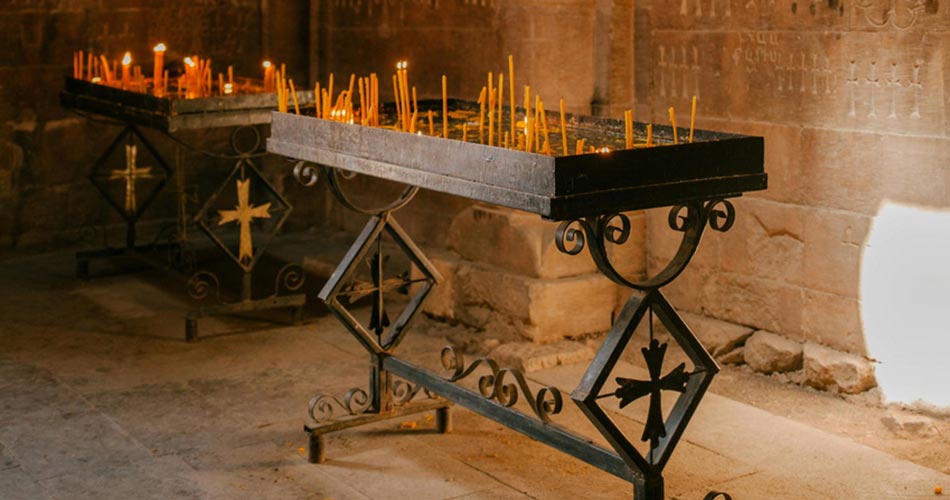
Paracelsus
Paracelsus (1493–1541) stands as a titan of medical history. He was an extraordinary and controversial figure whose revolutionary approach to healing reshaped the very foundations of medicine. Often hailed as the father of modern medicine, a title even recognised by the Prince of Wales, Paracelsus seamlessly bridged the gap between vitalism and mechanistic understanding, making him the first healer to synthesise these seemingly disparate philosophies. A pioneer in the burgeoning field of chemistry, he meticulously experimented with dosages of various substances, laying the groundwork for what would evolve into modern scientific practice. Drawing upon the wisdom of Hippocrates, he championed the principle of treating like with like - the notion that the very substance that triggers a malady, when administered in the appropriate quantity, can also facilitate healing. "Never does a hot illness find resolution through something cold, nor does a cold illness yield to heat. Yet, it is true that like can indeed cure like," he famously declared.
Paracelsus's insights transcended the simplistic notion that diseases could be tackled with one-size-fits-all remedies; he recognised that many ailments stemmed from chemical imbalances within the body and required tailored treatments. Yet, despite his remarkable advancements in scientific understanding, he remained deeply rooted in mysticism, captivated by the alchemical pursuits of his era. Alchemists sought nothing less than the transmutation of humanity’s baser instincts into a golden purity of spirit, and Paracelsus shared this aspirational vision. Above all, Paracelsus revered the innate healing power of Nature, believing that the body's inherent ability to heal far surpassed any external remedy. Much like Hippocrates before him, he celebrated the inner healer, believing that true wellness emanates from within. This is an ethos that continues to resonate in holistic healing practices today.
Cartesian Dualism
Until the dawn of the 1500s, inner and outer healing traditions existed in a harmonious intertwine, each ebbing and flowing in influence. At times, one tradition would dominate while the other gained ground, reflecting the rich tapestry of human understanding of health and well-being. However, everything changed with the advent of Cartesian dualism in the early 17th century, pioneered by René Descartes. He boldly separated the internal realm of moods, emotions, and thoughts from the tangible body, establishing a framework that would irrevocably alter our perception of existence. Descartes posited that the body and mind were fundamentally different substances: the body, a mere vessel of matter defined by spatial extension and motion; the mind, an entity of thought and consciousness. As the centuries progressed, the notions of dualism and materialism were taken to new heights by Sir Isaac Newton in the late 17th and early 18th centuries. Newton’s work unveiled a universe governed by mechanistic precision, leading to the revolutionary idea that our world exists independently of human experience. If the body could be treated as a machine, then healing became a matter of external interventions - targeted repairs of broken parts rather than holistic considerations of well-being. In the pursuit of this scientific rigour, doctors began to dissect the human body into increasingly minute components, hoping to understand the intricacies of the whole.
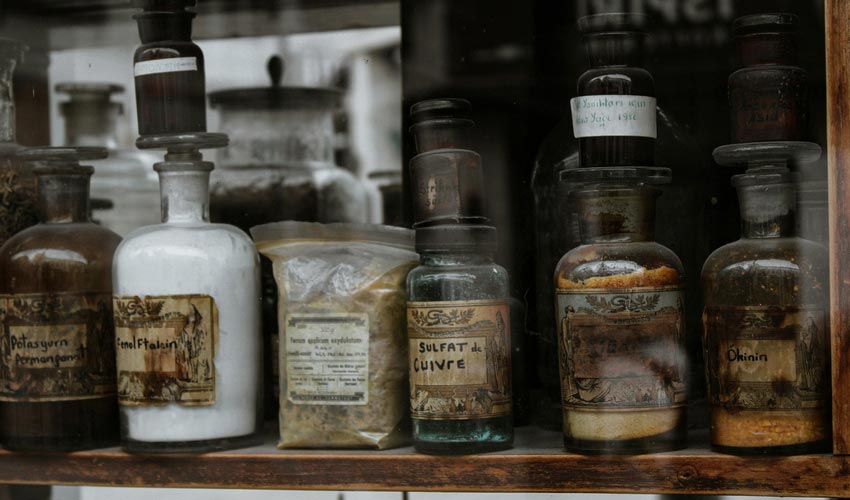
This journey into the physical realm began with the landmark dissection of a human body in 1543, heralding the birth of anatomy and unlocking the profound complexities of our physical selves. From that point forward, a fountain of knowledge surged forth, laying the foundation for modern medicine as we know it today. According to physician Larry Dossey, it was in the 1850s that medicine truly began its transformation into a science. Over the past four centuries, we have witnessed extraordinary advancements and amassed a tremendous wealth of external knowledge. Yet, this triumph comes at a cost. We find ourselves lacking a robust understanding of the internal or subjective methods of healing, leaving us with an incomplete vision that fails to encompass the integral nature of holistic health. As we stand at the crossroads of medicine's past and future, it is time to rebalance our approach to healing, embracing the interconnectedness of body and mind.
In the remarkable field of consciousness studies, new paradigms are emerging, pioneered by thinkers like Daniel Siegel and Alva Noë. They illuminate a profound truth: the mind operates independently from the brain, yet the brain is constantly moulded by the intricate dance of the mind, body, and environment, all engaging in a vibrant symbiosis. Here, the brain is more than just a biological organ; it serves as an extension of the mind, enhancing its capacity for thought and awareness.
Reflecting on our historical journey, from the hallowed temples of Asclepius in ancient Greece, through the bustling heart of Rome, into the enlightening period of the Enlightenment, and finally to our present age, we see a pattern emerge. Modern science tends to spotlight external factors, often at the expense of the internal landscape. However, as we embark on our healing journey, we'll uncover the profound interconnectedness of the external and internal worlds. Like the two intertwining serpents on the Caduceus staff, they are equally vital, forever entwined in a harmonious existence that cannot be disentangled.
“It is far more important to know what person the disease has than what disease the person has.” - Hippocrates












